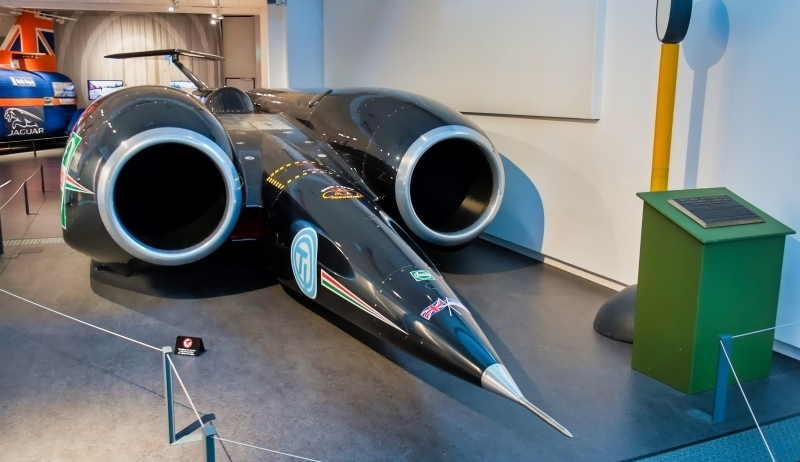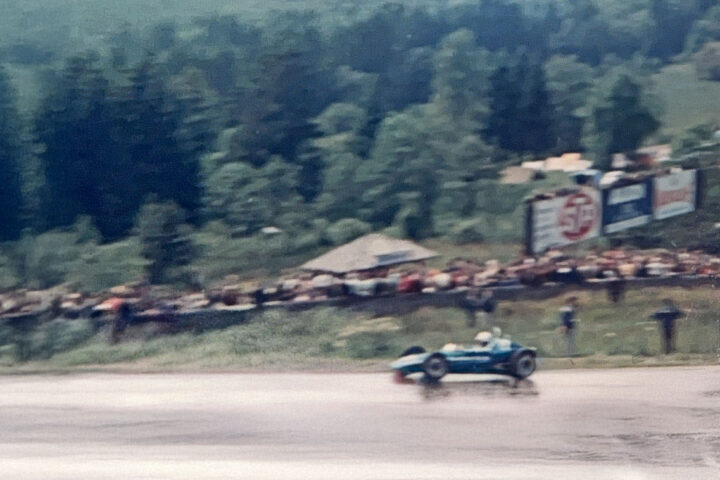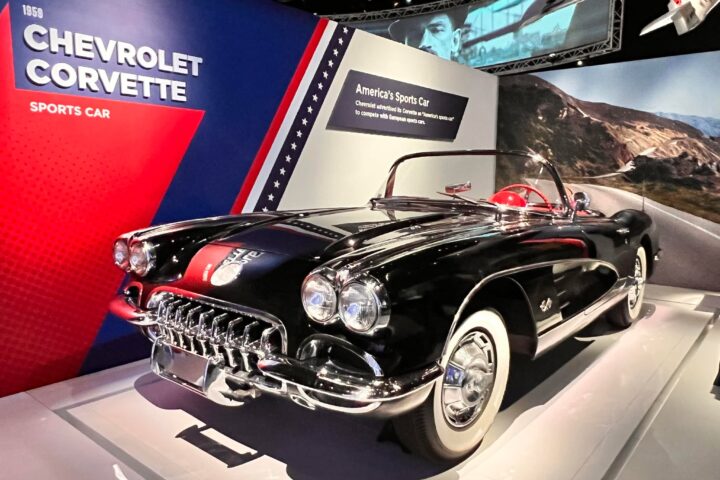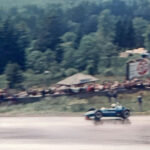by Devin Purcell – 10/09/2022
Every car enthusiast with gasoline running
through their veins has the same thing in common. The need for speed. Have you
ever sat down with a cold one in your hand and wondered why? We can thank our automotive forefathers for
ingraining this love of speed in our automotive souls because the race to be
the fastest started early.
If you were able to jump into a time
machine you could be there to witness the first-speed record firsthand. In
1898 Gaston Chasseloup-Laubat set the first speed record at a blistering speed
of 39.24 mph in an electric-powered vehicle and the fight to be the fastest was
started. It didn’t take long for the competition to
start because within a month the speed record was broken by Camille Jenatzy who
bested Chasseloup-Laubets’ speed with 41 mph. Maybe the speeds do not seem
fast, but I cannot even imagine going that fast in 1898. Was this record even
set on a road, or maybe it was set on a bumpy wagon trail.
As time continued the ever-increasing speed
record appeared as if it would never stop. However, when the ball dropped in
Times Square to ring at the start of 1997, the Thrust SSC would change
everything. The Thrust SSC is a one-off vehicle that
was designed for one thing in mind, possibly the thing that is on all car people’s
minds. PURE SPEED! (Sorry, didn’t mean to yell there).
The Thrust SSC first came to fruition from
the mind of Richard Noble, a famous entrepreneur, and former land speed record
holder. Having already set the world record in 1983 of 633.468 mph he had the
urge to go even faster. After all, he was known for the creation of the fastest
cars in the world, so no one doubted it. Knowing that the next version of his record-setting Thrust2 would push the limits of engineering he needed expertise. He
scoured the planet for his dream team of designers and engineers. This team
would be led by aerodynamicist Ron Ayers. The hiring pointed to the forethought
that he realized aerodynamics was going to be important in beating his record.
One thing everyone knew was this vehicle
was going to require a lot of power to be able to push the limits of Noble’s
standing record. They had the aerodynamics covered but now they needed
something capable of speeds that might break the sound barrier for the first
time on land. A fighter plane came to the rescue in the
form of a McDonnell Douglas F-4 Phantom II that was going to donate its engines
to science. Umm, maybe the science of speed would more accurately describe it.
Engineers toiled and were able to free and remove the two Rolls-Royce Spey
engines from the jet to use for the Thrust SSC.
After the two Rolls-Royce Spey engines were
installed on the chassis, they would generate a large amount of thrust. Over
40,000 pounds of thrust would be available to set the new world speed record,
engineers however didn’t stop there with the preparations. Computer-based simulations were used to
test the vehicle’s design and once engineers were satisfied, they created a
small-scale vehicle that was powered by a rocket. This allowed them to verify
that the vehicle would be able to withstand the shockwaves that would build up
on the car as it was approaching its supersonic top speed.
With the vehicle ready they needed the last
item of the puzzle, maybe the most important, the driver. After all, who was
going to be crazy enough to pilot this machine to speeds over Mach 1. Who was
going to be the one to dethrone vehicle creator, Richard Noble.
pilot to guide the “missile on wheels” through the Black Rock Desert. With this last piece of the puzzle found
they were ready to try and beat the world record. The run-up to the world
record was not easy. The Thrust SSC team ran into some mechanical issues that
they needed to figure out first or they were going to fail before they even
arrived.
They first found that they needed to find a
way to keep the vehicle from taking off at just 100mph. I imagine this could be
a large problem if you are looking at going 7x that speed. Once they eliminated this issue, they found
that the vehicle was harder to control with ever-increasing speed attempts.
This was eventually found to be a broken suspension component. However, when
they tried to find the reason it broke, they could not come up with a root
cause of the failure.
With this failure resting in the back of
his mind, Andy Green was ready to attempt the land speed record. With Craig
Breedlove attempting to himself break the record the scene was starting to look
like a blockbuster film. Their first attempt was a valiant attempt,
however, they failed. They were 50 seconds too slow in their return run to make
it official, which was in part due to the parachutes that slowed the vehicle
down not deploying. The next attempt was the attempt that would cement Andy
Green as not only the first person to break the speed of sound on land but a
new land speed record on the books.
Once the Rolls-Royce Spey engines brought
the vehicle up to speed, spectators marveled at the sight and the sonic boom
heard from the vehicle when it shattered the speed of sound. However, the man
at the controls had a different story to tell after his run. Andy Green was
recorded as saying the world-record vehicle was almost uncontrollable and was a
handful to drive. Clocking in at 763.035 mph, the Thrust SSC
set the new world record on October 15th, 1997. It was a monumental time to
break the record. It was 50 years and 1 day after Chuck Yeager had piloted the
Bell X-1 past the sound barrier in the air.
monumental feat that not only the car but also the team accomplished. The land
speed record that was set still holds today, 26 years later. We could only
assume that this record will be broken at some point in the future but not sure
when. The car is on display in the Coventry Transport Museum where it might inspire the next generation of land speed racers. With today’s advances in technology, we should be able to beat this
record. Maybe social media and other distractions of today are preventing
people from being interested and funding such an amazing feat of engineering.
Let’s make sure we do not let the history
of speed records fade to history, we need to continue to push the boundaries of
cars and the boundaries of ourselves!
Devin Purcell is an automotive professional
with over 20 years of industry experience. He currently spends his time
educating tomorrow’s automotive professionals and sharing his automotive
opinions at autoknowit.com























